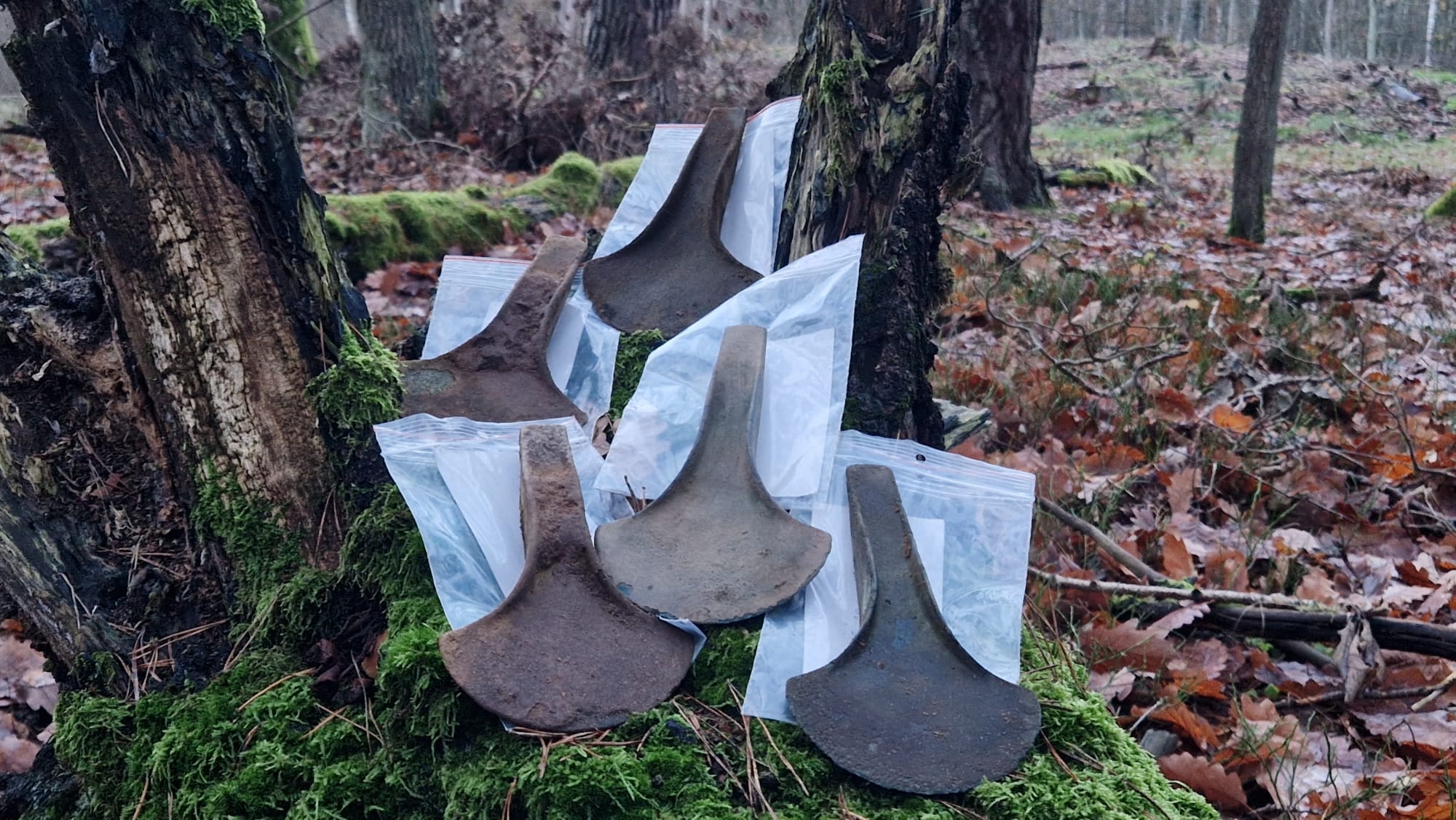
In a recent finding announced by the Pomeranian Provincial Conservator of Monuments, five ancient bronze age axes were uncovered in the Starogard Forest District of Kociewie, Poland.
These historical artifacts, dating back 3,700 to 3,100 years (1700-1300 BCE), were stumbled upon by Denis Konkol, a metal detectorist. The axes were neatly hidden just below the ground’s surface in a shallow pit.
Kociek is a region in northern Poland, characterized by forests and farmland. Konkol secured the necessary permits to carry out a metal detecting survey in this area.
Konkol promptly reported his discovery to local authorities in compliance with Poland’s laws for the discovery of artifacts. The subsequent excavation, led by Igor Strzok, ensured a careful and detailed process to safeguard the site from any potential harm, as reported by the magazine Archaeology.
Bronze age axes related to Baltic cultures
The axes, belonging to the tautušiai type connected with Baltic cultures, are likely from modern-day Lithuania or northeastern Poland. These bronze-age tools are characterized by their sizable form, a slim handle with raised edges, and a wide blade.
Piotr Klimaszewski, who leads the Archaeological Monuments Department, believes these axes were probably involved in a special ritual placement or offering. This could be tied to trade activities or the religious customs of bronze age communities.
[Archaeologists find five Bronze Age axes in the forests of Kociewie]
(Before reading! Follow us now for more histories. After reaching more than 500 followers, we'll share exclusive contents such as premium episodes, premium shows, full story of this day in history etc.)… pic.twitter.com/2pNQDkKOWL
— Orero Creations (@OreroCreations) December 5, 2023
Discoveries like these are exceptionally uncommon in the region, with the most recent comparable finding dating back roughly two decades in the Lublin area. Typically, bronze age excavations in this vicinity have mainly revealed items such as bracelets or breastplates, according to Archaeology.
The site of this discovery, situated in the Kociewie region of northern Poland, includes both forests and farmland. The axes were unearthed grouped together, buried about twenty to thirty centimeters beneath the surface and concealed under a layer of grass and soil.
An ‘archaeological sensation’ among experts
Experts are dubbing this a significant “archaeological sensation” due to the rarity of such findings in the area.Igor Strzok explains the significance of Konkol’s prompt reporting, allowing archaeologists to carefully explore and safeguard this valuable insight into Poland’s ancient history.
In the coming days, the five bronze age axes will be moved to the Archaeological Museum in Gdańsk for in-depth examination and preservation. Discoveries of this nature contribute significantly to our understanding of ancient cultures, shedding light on their technologies, beliefs, and trading networks, according to La Brújula Verde.
Despite numerous treasure hunters exploring regions like the Kociewie forests annually, few stumble upon discoveries as crucial as Konkol’s bronze age axe deposit.
See all the latest news from Greece and the world at Greekreporter.com. Contact our newsroom to report an update or send your story, photos and videos. Follow GR on Google News and subscribe here to our daily email!



